Ah, yes. The age-old question that all cat owners ponder is: how many times does a cat pee a day? Lucky for you, this blog seeks to answer that question and more!
Come dive into the beautiful world of feline urinary habits and behaviors as we explore everything there is to know about cats and their penchant for peeing.
How often does a cat pee?
Cats typically pee several times a day, but the exact number will vary depending on the cat’s unique needs. How often a cat will pee can be affected by various factors, including age, overall health, and activity level.
A healthy adult cat should generally urinate around one to four times every 24 hours, depending on its water intake and lifestyle.
Young cats may need more frequent peeing since they are still growing and developing. Older cats may also change their habits over time due to the aging of the kidneys and other organs involved in urine production and disposal.
Similarly, if a cat is experiencing increased fluid intake, it will likely need to urinate more frequently than usual.
While most cats tend to pee between one to four times per day, some cats may only go once a day, while others might go as often as six or seven times in 24 hours. The number of bathroom visits a cat takes can also depend on specific dietary changes or medical issues like urinary tract infections (UTIs).
As such, it is essential to monitor the frequency with which your cat pees to detect any potential issues or changes that could indicate an underlying medical condition or dietary problem.
Getting enough water throughout the day is essential to keep your cat healthy, as not drinking enough can lead to serious health concerns, including UTIs and dehydration.
If you notice an increase or decrease in how often your cat pees, it could indicate an issue that requires medical attention, so owners must watch for these subtle signs of distress in their pets’ behavior at all times.
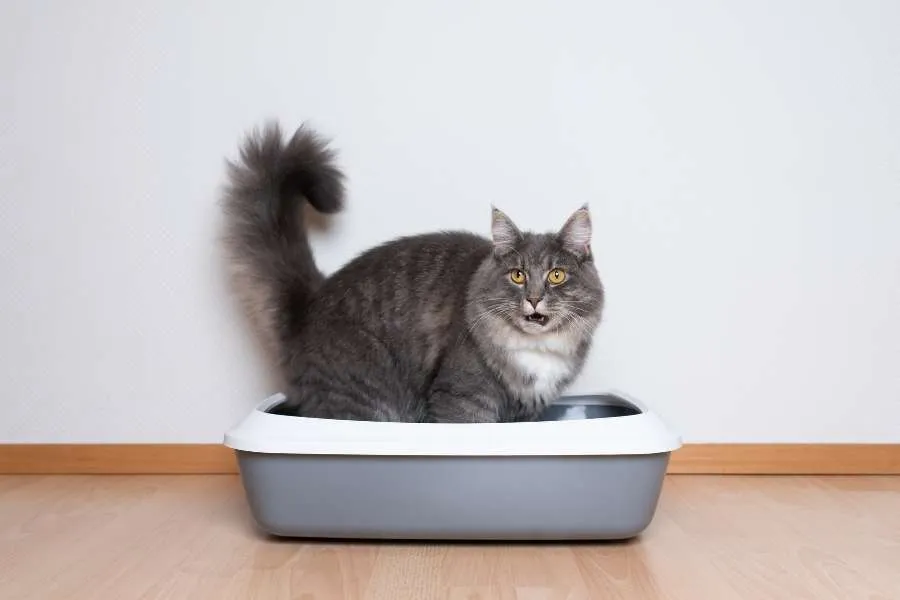
How to monitor your cat’s pee
Cats may pee more times than you think – anywhere from six to twelve! Monitoring your cat’s pee can help prevent urinary problems like bladder stones and urinary tract infections. It’s essential to be aware of how much your cat is urinating to make sure they stay healthy.
To monitor your cat’s pee, you will need to track the number of times they urinate throughout the day. Start by marking each urination on a calendar or spreadsheet, noting whether it was wet or dry. Try to observe any other signs that may indicate something isn’t right, such as straining while peeing; this could be a sign of a blockage or infection.
You should also monitor what type of litter is used in the box and whether it has been changed recently, as some debris can contain particles that irritate their delicate skin. Be sure to keep an eye out for changes in volume and color. For example, if there is more than usual produced or if it appears cloudy or bloody – this could signify an infection or blockage and warrant immediate attention from a vet.
Finally, try not to change the type of litter too often, as cats don’t like sudden environmental changes. Overall, monitoring your cat’s pee can help prevent more significant problems down the line!
How many times are standard for your cat?
Cats can be hard to monitor and understand what’s typical for their habits. One thing you may be wondering about is how many times your cat might pee in a day.
It’s essential to understand what is considered normal so that you can detect any irregularities or health problems that may arise — plus, finding out the answer can help you keep your home clean too!
The number of times a cat needs to pee daily varies from feline to feline. Generally speaking, the average is anywhere from one to four times during 24 hours — but each individual has different needs depending on their age, weight, diet, and activity levels. When assessing how often your pet should void urine, you’ll need to consider those things.
Your cat might also urinate more if they are particularly stressed or anxious — they secrete pheromones through peeing when they feel these emotions. If changes in the environment around them could cause uneasiness or worry them, it will likely result in more bathroom trips than usual.
Though it sounds counterintuitive at first, if cats don’t feel confident in their environment, then they instinctively want to mark it with their scent as an act of self-defense and assurance, much like dogs do when barking at strangers passing by their house.
Suppose all else checks out, and it appears that your kitty is good on the diet, activity level, and surroundings, yet still seems excessive when going number one more than once every 12 hours. In that case, it’s best suggested to consult your veterinarian about having tests done to ensure there is nothing health-related causing a greater frequency of potty breaks for them.
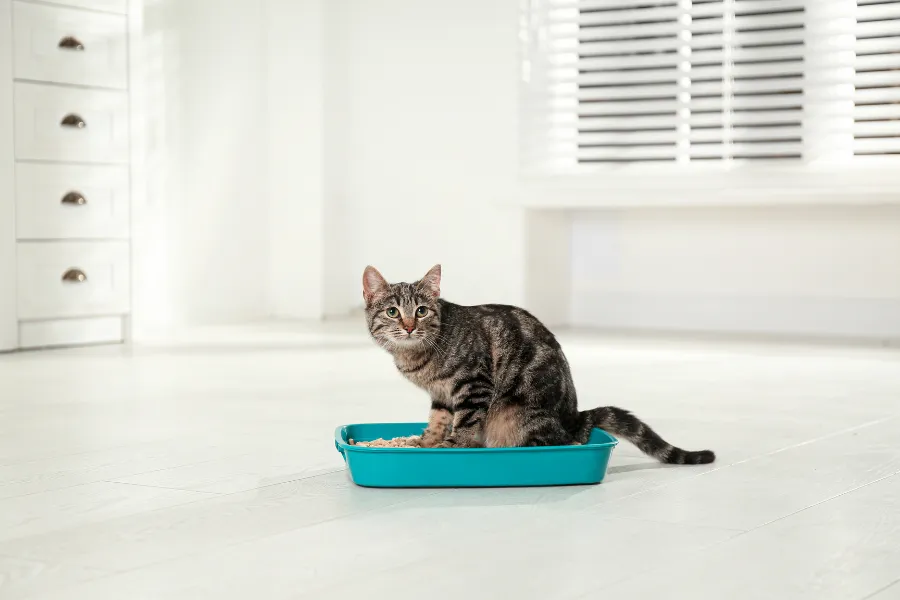
What does it mean if your cat is peeing a lot?
As the owner of a cat, it can sometimes be difficult to judge what’s normal for your pet. It can be especially concerning when it involves peeing. While cats typically pee one to four times a day, if your cat is peeing more often than usual, there could be underlying causes. It’s essential to evaluate your cat’s health and see if any changes in their lifestyle or environment could be causing this behavior change.
One possible cause of increased urination could be an illness or medical condition, such as a urinary tract infection. In this case, medical attention should be sought right away. The disease can also cause frequent visits to the litter box and urinating in small amounts at a time. Your cat might also experience pain and discomfort in daily activities if they have a UTI.
Dehydration is another possible cause of your cat peeing more than a usual requirement and can increase the frequency of using the box. You’ll want to monitor the amount of water available to your pet throughout the day.
Hydration is essential for developing proper balance in bodily fluids like urine volume and concentration within the body. It’s also important to recognize that stress may be playing a role in causing your kitty to have issues with frequent urination.
During certain times of the day or after specific events, such as attending vet appointments or visits from other cats or animals in the home, fear responses, which often include excessive grooming, inappropriate urinating, and defecating outside their litter box due to excited stress instigated hormones cortisol releases.
Hence, it is best to keep an eye on when they perform these behaviors, like excessively going into boxes multiple times, stating two-three each sitting, etc.
However, if referred by a veterinarian behaviorist to help deal with environmental fear factors that may cause problems, your chosen kitty, hopefully, after making some adjustments under veterinarian guidance, expected behavior returned loved furry friend. Good luck.
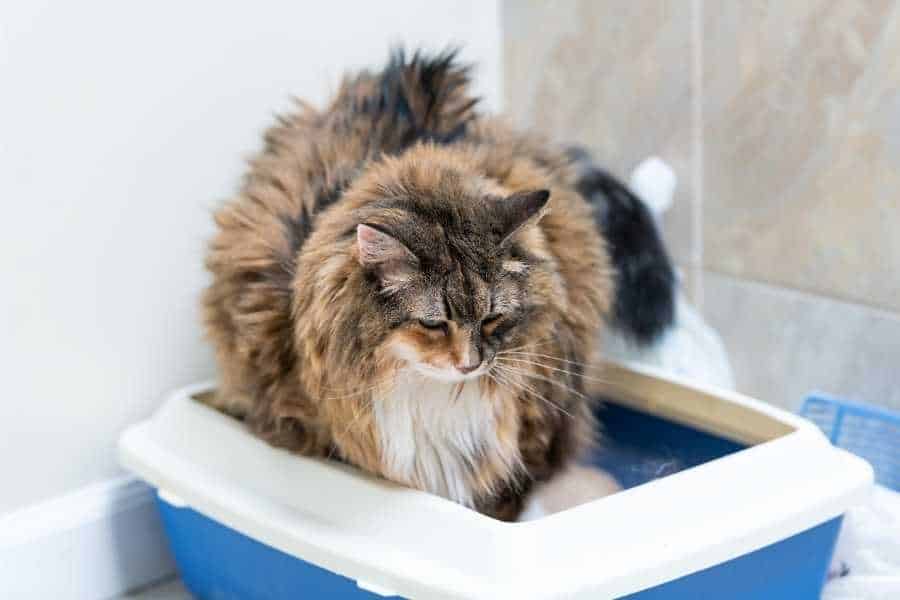
What does it mean if a cat pees less?
Generally, cats will pee one to four times per day. If your cat is peeing less than that, it may be a sign of a health issue.
It’s essential to ensure your cat has access to clean and fresh water and stays hydrated during the day. Make sure there are no disruptions in her litter box habits or changes in where she chooses to use the litter box (for example, if her favorite spot is suddenly unavailable).
If your cat is still urinating less than usual after ensuring these factors, it may be time to visit the vet. Your vet can run tests that may reveal underlying medical issues such as dehydration, diabetes, UTIs, cancer, or kidney disease.
Once the underlying cause is identified, your veterinarian can provide the appropriate treatment and suggest diet changes or medications if needed.
All pets age differently, so it’s essential to focus on their habits and behaviors to spot any changes. You know your pet best, so if you notice any decrease or increase in urination frequency without an understandable explanation, it’s time for a check-up with your veterinarian!
By staying on top of routine exams, you could prevent minor problems from turning into bigger ones, so feel free when something seems wrong.
Cat Urine Color
If you’re a cat owner, you’re likely curious about the color of your cat’s urine. After all, if there is something wrong with your cat health-wise or they’re not feeling well, it might be evident by changes in the urine color. Knowing how often they’re peeing can help determine whether they need to see a veterinarian.
So what color is normal for your cat’s pee? Generally speaking, normal cat urine will be clear and have an extremely light yellow hue — but there could also be faint shadings of orange or brown in there as well. Any drastic change from this should cause concern and an immediate trip to the vet.
How Often Do Older Cats Pee?
Mostly, older cats tend to pee less frequently than younger cats. The frequency of urination differs from cat to cat and ultimately depends on the type and amount of food they consume. However, most healthy cats will pee an average of one to four times daily.
It’s important to note that as cats age, their bladder control weakens, which can lead to difficulty holding their urine or an increase in urinating more often.
Urinary incontinence is quite common in cats over eight years old and is usually the result of cognitive dysfunction or primary disease of the lower urinary system itself. When a cat begins urinating more frequently, it’s essential to take them for a vet visit immediately.
Another situation that can cause increased urination in cats is constipation or blockage due to urine crystals forming on the wall of the bladder. This can be related to dehydration or insufficient fiber in their diet.
Suppose your older cat isn’t drinking enough water coupled with limited fiber consumption. In that case, it could result in constipation leading them to pee more frequently than usual for your kitty-sized bladder capacity.
Owners must also pay attention if blood is present during this increased frequency. It could signify an underlying health issue, such as kidney disease, which requires immediate attention from a veterinarian.
Otherwise, keep an eye on their acceptance and intake of food and water; if they are sufficient with both – then no serious health concern should arise with this behavior.
Regardless, continued monitoring by pet owners is highly encouraged as they know best when something has changed regarding their old feline’s well-being habits!
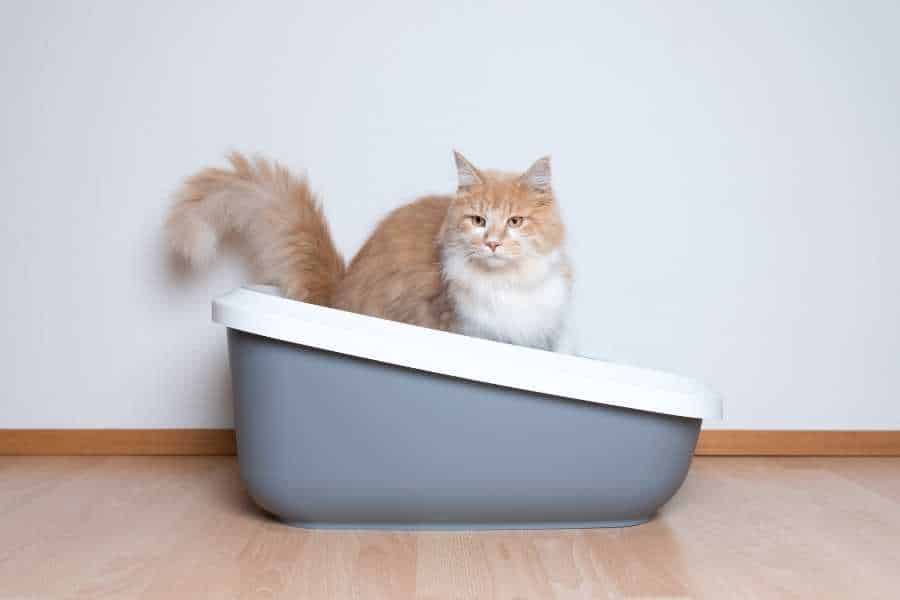
How Long Can a Cat Hold Its Pee?
When it comes to the topic of how long a cat can hold its pee, there is no one-size-fits-all answer. It depends on the cat’s physiology, hydration, and overall health. An average healthy adult cat can usually wait between 10 and 12 hours before needing to use the litter box.
Some factors influence a cat’s ability to control its urinary bladder muscles, such as stress-related conditions or insect bites that make the area around the anus too sensitive to pass urine comfortably. A bladder infection or an obstruction can also reduce a cat’s ability to control its urination.
A dehydrated cat may also have difficulty holding its pee for long periods due to reduced urinary concentration, so it’ll want to empty its bladder more often than usual. Additionally, kittens need frequent trips to their litter boxes because they open their bladders much less efficiently than adult cats. Spills are more familiar with younger cats until full maturity occurs at about one year old.
Pet owners must observe signs suggesting their beloved cats can no longer hold their urine. Constant licking around the anus or increased urination frequency accompanied by straining motions, vocalizations, or lethargy after trips to the litter box. If these symptoms persist for several days, owners should seek timely medical advice from a qualified vet who can examine potential causes associated with unusual urination patterns and provide appropriate treatment where needed.
Other Abnormalities to Lookout For
If you notice your cat’s bathroom habits are abnormal, it is essential to be aware of other potential signs of health complications. Many conditions can cause increased urination frequency and other changes in cats’ toilet habits, so it is always a good idea to observe for any other abnormalities when trying to understand your cat’s overall health.
For example, other behaviors that can indicate something is wrong with your pet’s health include sudden lethargy or changes in appetite. You should also closely monitor the appearance and odor of the urine. The size and color of the feces are also essential indicators and should be noticed.
Other signs such as straining, lack of coordination, or painful postures when attempting to pee could also be warning signs that require additional attention from an animal healthcare provider.
In addition to these more obvious physical concerns, some more subtle behavioral changes could tell you something is wrong. If your cat becomes uncharacteristically aggressive or anxious when trying to urinate, this is often an indication that something isn’t quite right.
On the flip side, if your cat suddenly appears less vocal in their normal daily activities, it may also exhibit signs of feeling unwell.
Combined with how often they use the litter box, which may begin, it can provide clues on what course of action should be taken next, whether it be medical intervention or dietary change. Close monitoring for physical, emotional, and any behavior changes combined with their toileting habits can help you identify possible problems quickly.
Appropriate action can follow immediately, delivering the best outcomes for your feline friend and, ultimately, peace of mind for all those concerned individuals loving them unconditionally too!
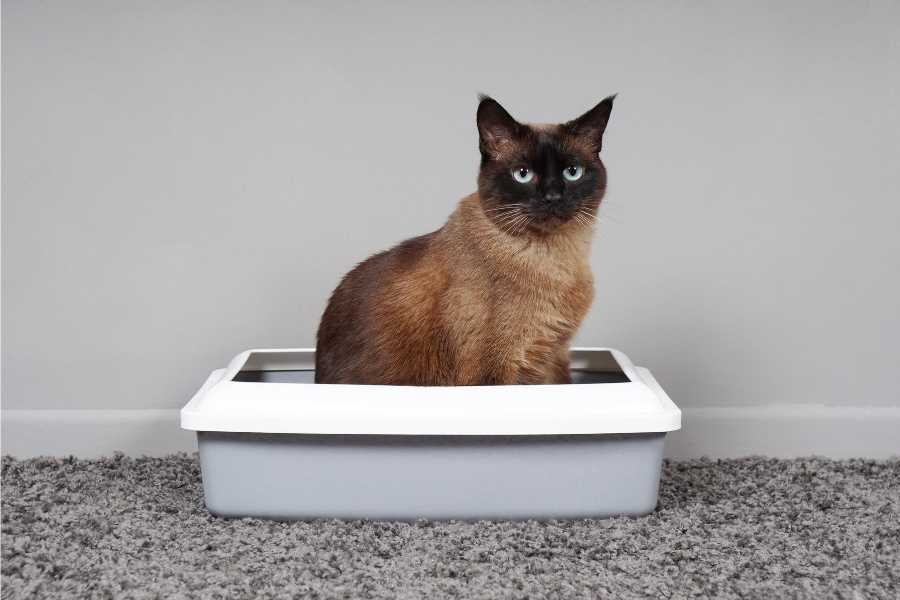
Conclusion
In conclusion, the number of times a cat will pee each day can vary significantly depending on factors such as age, gender, and health. That being said, it’s estimated that the average cat pees two to four times a day in general.
If you notice your cat is peeing more or less often than usual, be sure to take them to the vet to ensure, there isn’t an underlying medical condition that needs attention.
On the other hand, if your cat is an indoor-only pet, it’s essential always to provide them with enough litter boxes to have access when needed. Regularly scooping out unused litter can also help keep their bathroom area clean and discourage them from urinating elsewhere in your home.
With just a few simple steps, you can control your cat’s bathroom habits and provide them with a comfortable and secure environment for taking care of their business!
